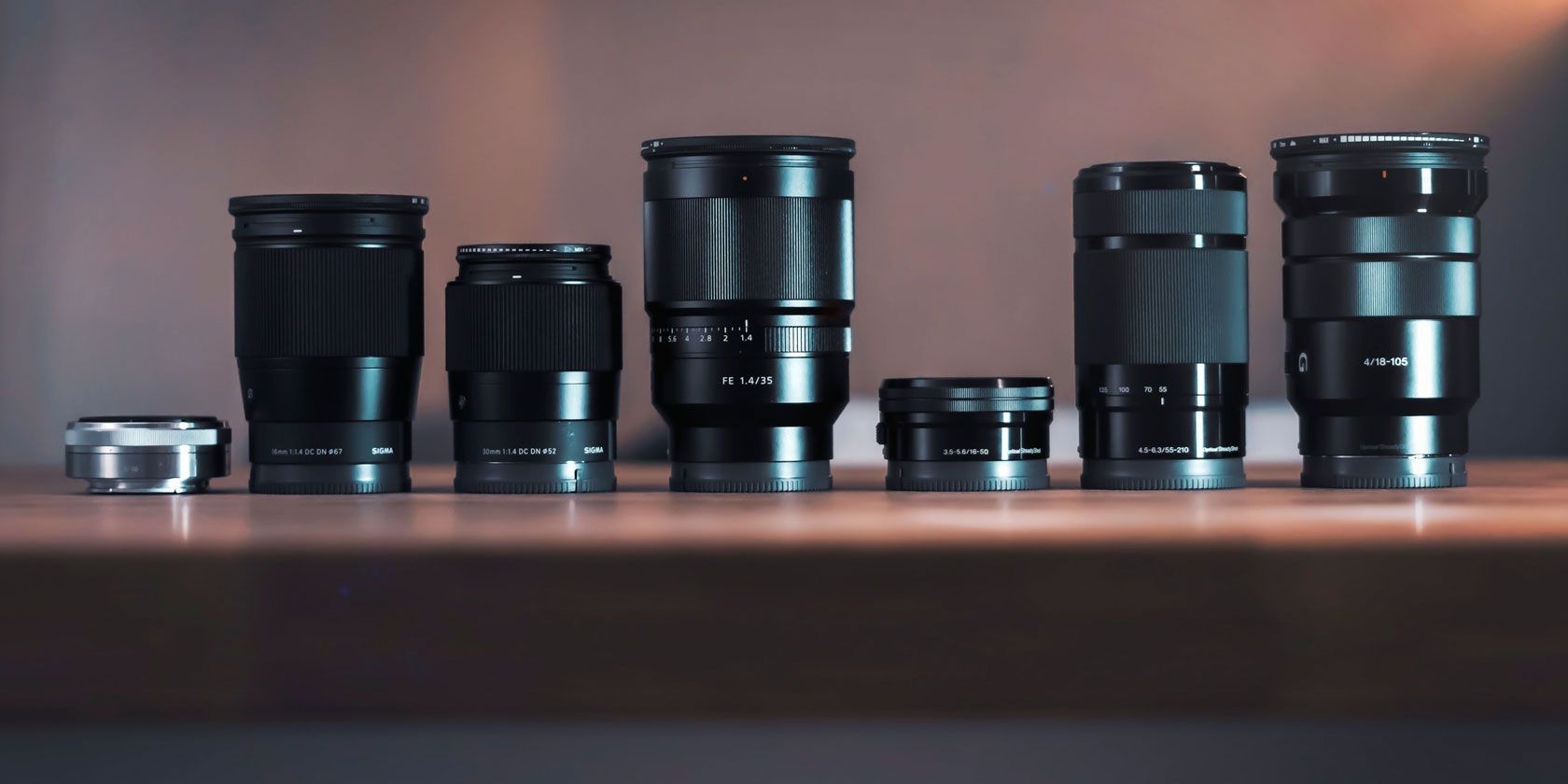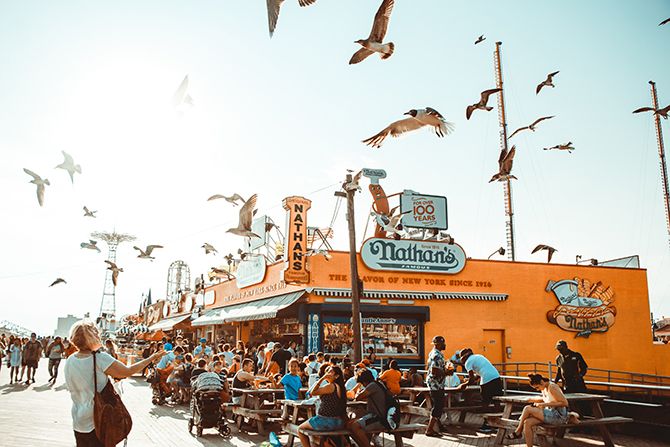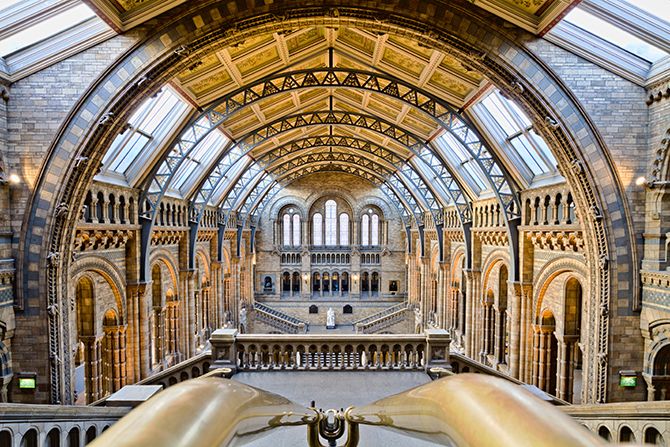There comes a time when every DSLR or mirrorless owner wants to branch out from the kit lens that came with their camera. But with so many to choose from, which lens should you buy?
It's easy to fall into the trap of thinking you need the full focal range of lenses, from ultra-wide to ultra-long. This is the wrong approach. Instead, decide what kind of photos you want to shoot, then pick a lens that's best suited to that kind of photography.
Let's take a look at some popular types of photography, and what kinds of lenses you need for them.
Best Camera Lens for Casual Shooting
Best Choice: Budget telephoto zoom lens
Most manufacturers produce a telephoto zoom as a companion to the kit lens, with the same design, build quality, and affordable price. It usually has a range of around 55-200mm, and is a great choice if you constantly find yourself wishing your kit lens could zoom further.
There's another option worth considering, especially if you're reluctant to lug around heavy camera gear. A pancake lens.
This is a lens that is typically less than an inch thick. They're usually prime lenses, but there are a few zoom options too, like the Panasonic 12-32mm for Micro Four-Thirds cameras. (What's the difference between prime vs. zoom lenses?)
This focal length would replace your existing kit lens, but it could be worth it. A pancake lens on a mirrorless camera makes for a highly portable setup. It's the ultimate in casual shooting.
Best Camera Lens for Shooting Vacations
Best Choice: Superzoom lens
When you're on vacation you don't want to be constantly changing lenses or carrying around a heap of camera gear. But you do want maximum flexibility, since you don't always know what you'll be shooting.
A superzoom lens was made for this purpose. With a focal length starting at 18-200mm or 18-300mm on a crop sensor, it's got you covered for most situations.
There are a couple of issues to be aware of. Superzoom lenses can be pricey, especially if you're buying a quality model, and they aren't suited to low light shooting. They also tend to be quite big and heavy.
If you want to keep the size down, switching to a mirrorless camera (instead of using a DSLR camera) could help.
Best Camera Lens for Shooting Landscapes
Best Choice: Wide or ultra-wide angle lens
For landscape photography a wide angle lens is essential. A wide angle lens helps you fit more of the scene into your picture, and also gives you a more distinct foreground, middle ground, and background. A longer lens, by comparison, compresses the scene.
The ideal landscape lens would be a prime lens with a focal length of around 12mm to 18mm on a crop sensor. For greater flexibility you can also consider a wide zoom in the range of 10mm to 24mm.
You don't need to worry about aperture. Landscape photography is better with a tripod. And in any case, shooting at a smaller aperture like f/11 will give you the sharpness and clarity that you're looking for.
Best Camera Lens for Candids, Street, and Weddings
Best Choice: Fast prime lens
It's important to get the right lens when shooting candid images. Choose something too wide and you'll need to get right in your subject's face. Go too long and your photos will take on a voyeuristic quality.
The best lens for candids, including street photography or weddings, is the famous "nifty fifty". Named after the 50mm lens on full frame and film cameras, the modern equivalents are 35mm on APS-C sensors, and 25mm on Micro Four Thirds. They are renowned for their versatility.
Often referred to as "normal" lenses, they're small, high quality, and cheap. Better still, they almost all have an aperture of at least f/1.8, making them perfect for shallow depth of field and low light shooting.
Best Camera Lens for Shooting Architecture
Best Choice: Wide or ultra-wide angle lens
For architecture photography a wide or ultra wide angle lens is a must. This would have a focal length around 10mm to 18mm on a crop sensor.
Aperture is not a priority, as you'll probably be shooting on a tripod with a small aperture. Neither is auto-focus, since your subject won't be moving. This really opens up your options, including vintage or affordable manual lenses.
The exception is if you shoot interiors in public buildings. You might not be able to set up a full tripod here, so you can either build a makeshift tripod or use a wider aperture lens.
Best Camera Lens for Shooting Wildlife
Best Choice: Long telephoto zoom lens
The main requirement for a wildlife photography lens is that it has a long reach. You need a zoom lens, as long as you can afford, and the longer it is, the more expensive. Something like a 70-300mm is a good starting point.
A larger aperture is better, but again comes at a price. Image stabilization is a must, and is now standard.
There's two other factors easy to overlook. First, you need the lens to be responsive. A manual zoom, where you twist the barrel to zoom in and out, is both faster and more precise than a power zoom.
Second, as you'll be shooting outdoors, consider a weather resistant lens. You will have to couple this with a weather resistant body to get the benefit.
Best Camera Lens for Shooting Portraits
Best Choice: Large aperture, medium telephoto prime lens
The classic portrait lens is a short to medium telephoto lens with a large aperture. On a crop sensor this equates to a prime lens with a focal length in the region of 60mm to 85mm and an aperture of at least f/2.8, but preferably f/1.8.
This gives you the desired look for portraits: crisp focus on the face, a soft, creamy background, and none of the distortion that is common when shooting people with wider lenses.
A zoom lens in the same focal range can work, but they usually have a smaller maximum aperture so you won't get the same shallow depth of field.
Best Camera Lens for Shooting Close-Ups
Best Choice: Macro lens
If shooting objects in close-up is your thing then you need a macro lens. These have a higher magnification level than standard lenses, and let you capture objects in great detail.
The main thing to know about macro lenses is that the wider the focal length, the closer you will need to get to your subject. This could be as close as a couple of inches.
Whether this matters depends on what you shoot. A bug will fly off if you get too close, or if you're shooting in natural light your camera could end up casting a shadow over the subject. Where you control the environment, like if you're shooting static subjects indoors, a close focussing distance is less of an issue.
60mm is a good starting point for a macro lens on a crop sensor. Wider could be less flexible, and longer is better but a lot more expensive. And look for image stabilization.
The best thing about macro lenses is that you can also use them for regular shooting. Keep this in mind when picking your focal length: maybe your macro lens can double up as your portrait lens.
Best Camera Lens for Sports and Action
Best Choice: Large aperture, long telephoto zoom lens
Serious sports and action photography is very challenging for your gear. You need a good camera body as much as anything, one that can focus quickly enough to track a moving subject.
For the lens, you want a long telephoto zoom in the region of 100-400mm. It should have good image stabilization, and as wide an aperture as you can manage in your budget.
A budget tele zoom can work but the aperture often maxes out at f/5.6 or smaller at the long end. You'll start to struggle as soon as the light becomes less than ideal, and you'll be less able to gain separation between the subject and background.
The best lenses move you into pro territory. There's no getting away from it---a quality sports lens will set you back a small fortune.
Best Camera Lens for Night and Low Light
Best Choice: Wide aperture lens, any focal length
For nighttime or low light photography, your main concern is the aperture of your lens. You want something with a maximum aperture of at least f/2.8, and preferably larger (a smaller f-number, like f/2 or f/1.4).
This means you'll mostly be looking at prime lenses. The focal length you choose depends on what you want to shoot with it: wide for landscapes, normal for street, or telephoto for wildlife.
In fact, for general use, a wide aperture prime---like a 35mm f/1.8---makes a great companion to a kit lens. It's a compact and affordable combination that gives you both zoom range and low light capability.
Choosing the Right Camera Lens: Now You Know
There are so many lenses to choose from, it's really important to be sure that you're buying the one most suitable for your needs.
First, make sure your chosen lens is right for the type of photography you want to create. Then, take a look at the images it can produce when used with your camera body. Once you're happy with both, break out the credit card, because you're good to go. And remember, after spending your hard-earned money on a great lens, you'll want to know how to take care of your camera lenses.











